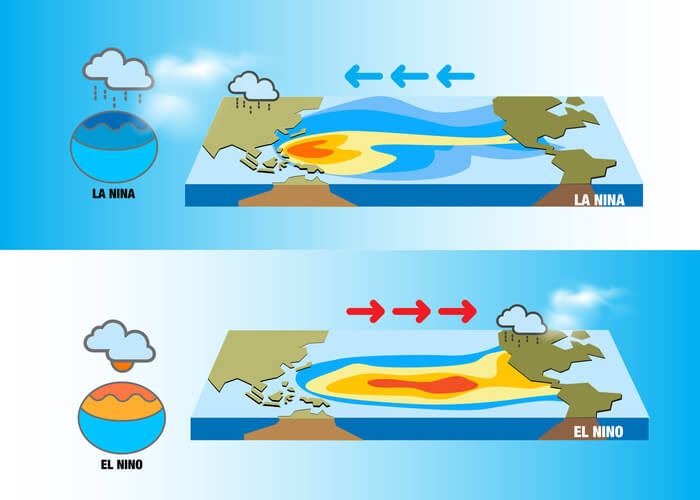Origin of the Monsoon in India
The monsoon refers to the seasonal winds that bring heavy rains and are a critical feature of the climate in many parts of the world, particularly in South Asia, including India. The origin of the monsoon can be traced to the complex interaction between the Earth’s atmosphere, ocean currents, and the position of the Sun.
In India, the monsoon is primarily driven by the differential heating of land and sea. During the summer months, the Indian subcontinent heats up faster than the surrounding oceans, creating a low-pressure area over the land. At the same time, the Indian Ocean remains relatively cooler, creating a high-pressure system. This pressure difference results in the movement of moist air from the ocean towards the land, bringing the monsoon rains. These winds are known as the Southwest Monsoon, which blows from the southwest towards the northeast of India, typically between June and September.
As the monsoon winds travel across the warm Indian Ocean, they gather moisture, which is then released as rainfall when they hit the western Ghats, the Himalayan foothills, and the central plateau of India. The monsoon rains are critical to India’s agriculture and water supply, and their timely arrival and distribution are vital for the country’s economy.
Factors Affecting the Monsoon
The monsoon’s intensity, duration, and distribution are influenced by several factors:
- Differential Heating of Land and Water: The land heats up faster than the ocean during the summer months, causing low pressure over the landmass and high pressure over the surrounding oceans. This pressure difference drives the southwest monsoon winds, which bring moisture-laden air from the Indian Ocean.
- Himalayan Mountain Range: The massive Himalayan mountain range plays a crucial role in the monsoon by blocking the northward movement of air. This causes the moist air to rise and cool, resulting in heavy rainfall on the windward side of the mountains, especially in regions like Kerala and the Western Ghats. The rain shadow effect on the leeward side of the mountains (like Rajasthan and parts of Gujarat) leads to arid conditions.
- Tibetan Plateau and the Jet Stream: The heat from the Tibetan Plateau, which is at a higher elevation, also affects the monsoon. During the summer, the warming of this region contributes to the formation of a strong low-pressure system, which further strengthens the monsoon winds. The jet stream, a narrow band of strong winds in the upper atmosphere, can also influence the timing and strength of the monsoon rains.
- Position of the Sun: The movement of the Sun between the Tropics of Cancer and Capricorn during the year affects the shift in atmospheric pressure systems. During the summer, the Sun’s position over the Tropic of Cancer intensifies the low-pressure system over the Indian subcontinent, attracting the moist winds that bring the monsoon.
El Niño and La Niña and Their Impact on the Monsoon
El Niño and La Niña are phenomena associated with the periodic changes in sea surface temperatures in the equatorial Pacific Ocean, which can significantly affect global weather patterns, including the Indian monsoon.
- El Niño: El Niño is characterized by the warming of sea surface temperatures in the central and eastern Pacific Ocean. This phenomenon disrupts the normal atmospheric circulation and weakens the Indian monsoon. When El Niño occurs, the Indian Ocean experiences a reduction in the moisture supply, leading to a drought or a weak monsoon. This has adverse effects on agriculture, leading to water shortages, crop failures, and economic strain in India.
- La Niña: La Niña is the opposite of El Niño and is marked by cooler-than-average sea surface temperatures in the central and eastern Pacific. La Niña typically strengthens the monsoon, as it increases the moisture available in the atmosphere. This can lead to above-average rainfall and is associated with the occurrence of flooding in many parts of India. However, the strength and duration of La Niña effects can vary, and extreme La Niña events might also cause excessive rainfall in specific regions.
Conclusion
The monsoon in India is a complex climatic phenomenon that has a significant impact on the country’s agriculture, economy, and water resources. The main driving force behind the monsoon is the differential heating of land and sea, creating a pressure difference that leads to the movement of moist air from the ocean to the land. Factors such as the Himalayan range, the Tibetan Plateau, and the position of the Sun further influence the monsoon’s onset and intensity. Additionally, global phenomena like El Niño and La Niña can have a profound impact on the timing and strength of the monsoon, affecting rainfall patterns and contributing to droughts or floods. Understanding these factors is crucial for better forecasting and managing the challenges posed by the monsoon in India.
Subscribe on YouTube - NotesWorld
For PDF copy of Solved Assignment
Any University Assignment Solution


.webp)